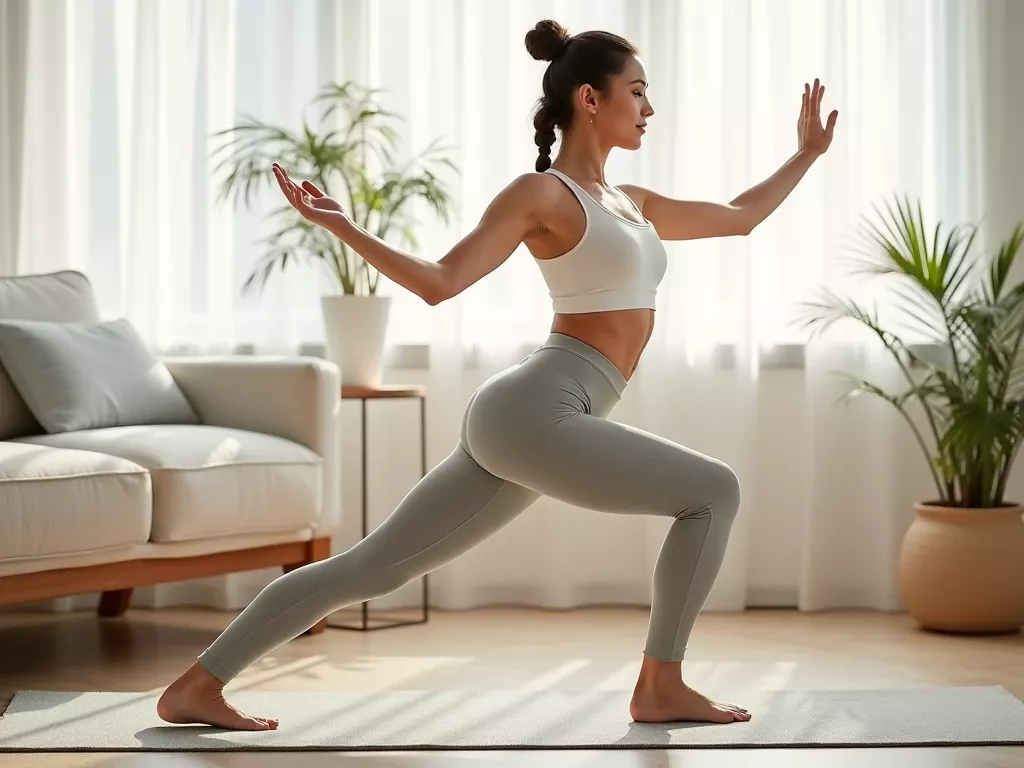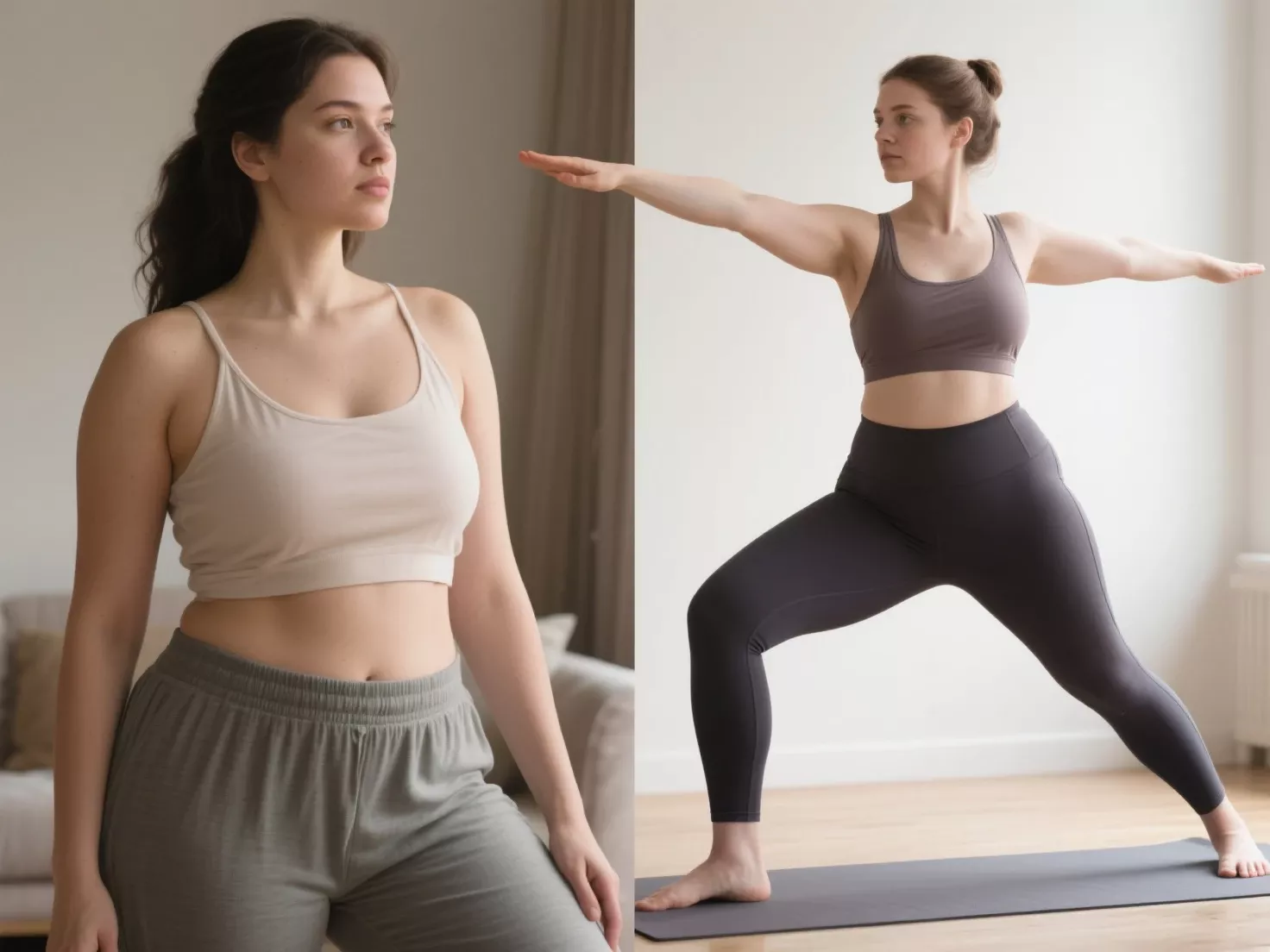Yoga pants have become a staple in modern activewear — not just for the gym or yoga class, but also for casual, everyday wear.
With their comfort, flexibility, and flattering fit, it’s no surprise they’re so widely loved.
However, the occasional sighting of see-through yoga pants — especially when someone bends over, squats, or stretches — often sparks curiosity or even controversy.
Many people wonder: Why would someone wear leggings that are transparent?
The short and honest answer? Most women don’t realize their yoga pants are see-through.
In the vast majority of cases, transparency in yoga pants is accidental, not intentional.

This article dives deep into the real reasons yoga pants might become see-through, including the role of fabric quality, body movement, design flaws, and consumer awareness.
We’ll also explore how women can avoid transparency and choose leggings that offer full coverage, comfort, and confidence.
🧵 The Primary Cause: Fabric Stretch and Transparency
Yoga pants are typically made from stretchable synthetic blends — most commonly nylon, spandex (elastane), polyester, and lycra.
These materials are chosen for their elasticity, allowing the fabric to move with the body without restricting range of motion.
However, even high-quality stretch fabrics have their limits. When these materials are:
-
Overstretched, especially across the glutes or thighs
-
Manufactured too thinly
-
Poorly constructed with minimal threading or single-layered fabric
…they become partially transparent when placed under stress — often without the wearer’s knowledge.
Common Reasons Fabric Becomes See-Through:
| Factor | Explanation |
|---|---|
| Thin or Cheap Material | Less dense weaves = lower opacity |
| Overstretching | Fabric stretched too tight loses its coverage |
| Worn-Out Leggings | Repeated washing or wearing breaks down fibers |
| Light Colors | Whites, greys, and pastels tend to show more skin than darker fabrics |
| Improper Sizing | Too-small leggings stretch further than intended, making sheerness more likely |
| Lighting Conditions | Bright lights (especially from behind) reveal more than ambient indoor lighting |
👖 Style vs. Substance: Not All Leggings Are Made the Same
With the rise of “athleisure” fashion, leggings are now made in countless variations — some designed for performance and others for style.
Inexpensive fashion brands may prioritize appearance over function, producing leggings that look good but lack the thickness needed for proper coverage during movement.
Many women buy leggings based on:
-
Fit and feel in the dressing room (often standing still)
-
Price and visual appeal
-
Online images, which can be misleading
The problem arises when leggings that seem opaque while standing upright become see-through when bending, such as during a forward fold in yoga or a squat at the gym.
Women often discover this after wearing them in public or through candid photos — and are often embarrassed once they find out.
🙋 Do Women Intentionally Wear See-Through Yoga Pants?
In most cases: No. Transparency is usually:
-
Unintentional
-
A result of cheap or poorly constructed fabric
-
A consequence of wear and tear
-
Or something they’re unaware of
There may be some who intentionally wear revealing clothing as a form of personal expression, body positivity, or confidence — but this is the exception, not the rule.
👩⚕️ How to Avoid See-Through Yoga Pants: Practical Tips
For women who want to wear leggings confidently without worrying about transparency, there are some practical ways to ensure full coverage:
✅ Before You Buy:
-
Do the “squat test” in a fitting room or at home — squat under bright light and check in a mirror or use a phone camera.
-
Check fabric weight: Look for words like opaque, double-knit, or non-see-through in product descriptions.
-
Buy from trusted brands: Companies like Lululemon, Athleta, Alo Yoga, and Gymshark often engineer their leggings to withstand intense movement without transparency.
-
Choose darker colors: Black and navy typically offer better coverage than white, grey, or pastel shades.
-
Buy the right size: Leggings that are too small stretch more and become sheer — always go with a snug, but not skin-tight, fit.
✅ When You Wear:
-
Wear seamless or nude-colored underwear to avoid visible lines or bright patterns showing through.
-
Avoid fluorescent lighting when possible — this lighting tends to expose sheerness more than natural light.
-
Layer if needed: Longer tops or a thin pair of shorts over leggings can add confidence and prevent unwanted exposure.
🧘♀️ Why Women Love Yoga Pants (Despite the Risks)
Even with the possibility of transparency, yoga pants remain a favorite for millions of women for good reasons:
-
Comfort: Stretchy, soft fabrics feel like a second skin.
-
Ease of movement: Perfect for yoga, gym, errands, or lounging.
-
Flattering fit: Designed to hug the body and accentuate natural curves.
-
Versatility: Can be worn to workout classes, the grocery store, or at home.
-
Confidence: Many women feel empowered and body-positive wearing well-fitted activewear.
For most women, the goal is not to attract attention — it’s to feel comfortable, strong, and capable while moving through their day.
🤝 Social Awareness and Respect
If you notice someone wearing see-through yoga pants, it’s important to remember:
-
They may be completely unaware of it.
-
It’s rarely an intentional choice.
-
Offering respectful, discreet feedback (if you know the person well) can be helpful — not mocking or public commentary.
“Judging someone based on a fabric flaw is far less graceful than simply letting people move freely in the world.”
🌟 Final Thoughts
The phenomenon of see-through yoga pants is much more about fabric science and clothing quality than it is about attention-seeking behavior.
The vast majority of women want leggings that move with them, cover them, and empower them — not reveal them.
Transparency is most often accidental and can be avoided with the right shopping knowledge and awareness.
So next time you see yoga pants that appear sheer, remember: it’s probably not a choice — and the solution lies in better fabric, not judgment.



